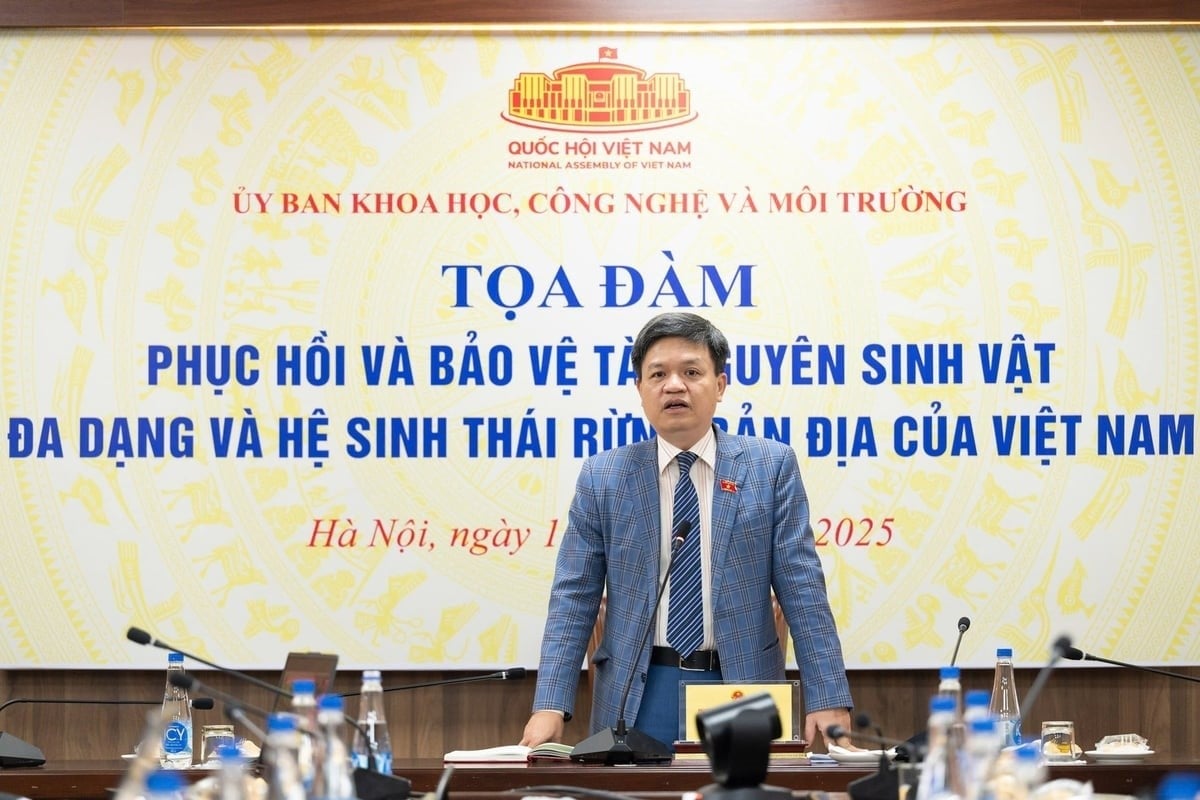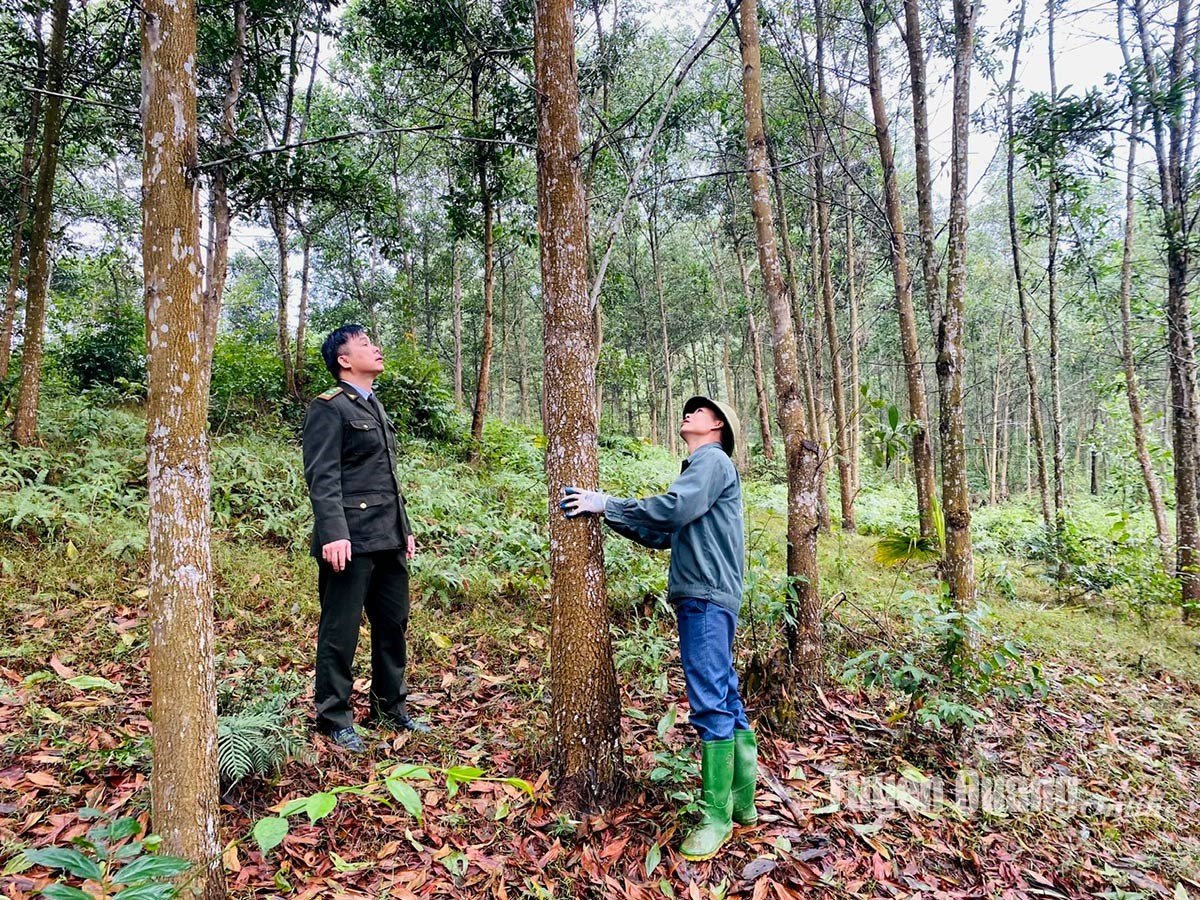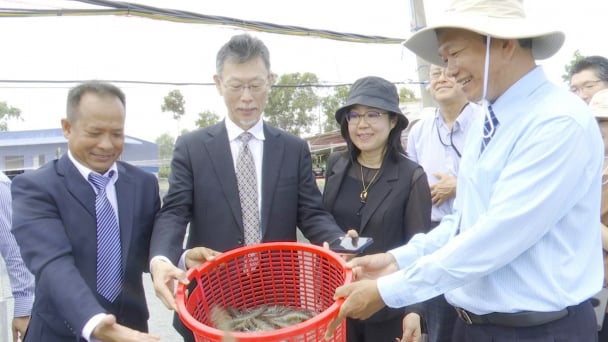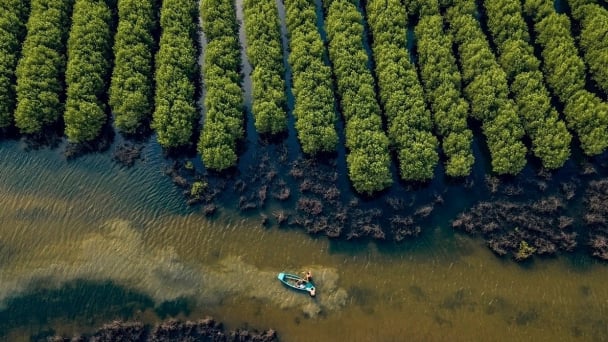June 16, 2025 | 03:24 GMT +7
June 16, 2025 | 03:24 GMT +7
Hotline: 0913.378.918
June 16, 2025 | 03:24 GMT +7
Hotline: 0913.378.918
That is the opinion of Dr. Dang Trung Phuoc, Chairman of the World Biodiversity Conservation Association, at the seminar "Restoring and protecting diverse biological resources and indigenous forest ecosystems of Vietnam," organized by the Standing Committee for Science, Technology and Environment on March 13 in Hanoi.

Mr. Ta Dinh Thi, Vice Chairman of the National Assembly's Committee for Science, Technology and Environment, chaired the seminar. Photo: Pham Thang.
Vietnam has had more than 40 years of growing and developing acacia. Acacia has brought livelihoods and economic benefits to Vietnamese households.
According to statistics in 2024, the total area of acacia planting forest in Vietnam is currently more than 1 million hectares (accounting for over 30% of the total planted forest area nationwide). Acacia is the main source of raw materials for manufacturing industries of paper and pulp, artificial boards, wood chips, and wooden furniture for export.
Acacia is one of the timber trees grown a lot in Vietnam thanks to rapid growth, usually reaching about 90 m³ of round wood after 6 years. If people do not exploit young wood but leave and care for it another 5-6 years to become the large timber forest before exploiting, then the wood reserve will double, and the selling price is also 2-3 times higher.

The FSC-certified 8-year-old acacia forest of Ban Giao people in Tan My commune (Chiem Hoa). Photo: Tuyen Quang Newspaper.
Acacia is a quite typical species in afforestation today. According to the calculation of the forestry industry, small timber forest growers must invest twice, with an average cost of about VND 60 million/ha. Meanwhile, the large timber forest only needs to be invested in once, with an average cost of about VND 40 million/ha. The large timber forest planting cycle is double, but the economic efficiency is 2-3 times higher than for small timber forests.
However, according to Dr. Dang Trung Phuoc, Chairman of the World Biodiversity Conservation Association, acacia is an exotic species, not an indigenous one. Therefore, besides economic benefits, acacia growing and exploitation are causing many negative impacts, such as environmental pollution, landslides, and affecting indigenous forest ecosystems.
Mr. Ta Dinh Thi, Vice Chairman of the National Assembly's Committee for Science, Technology and Environment, said that in socio-economic development, we need to aim for the balanced development between economics and environmental protection. In particular, acacia forest is an important part of the forestry industry.
In order to develop in a sustainable and more environmentally friendly direction, in parallel with biodiversity conservation, we need to take another prism to comprehensively consider the effects that acacia trees bring. Therefore, it is necessary to find solutions and orientations to balance socio-economic development and biodiversity conservation.
The current problem is how to keep livelihoods for people but still have a change towards sustainable growth. At the seminar, Dr. Dang Trung Phuoc proposed that it is necessary to aim for changing acacia but not affecting people living on acacia.
Of which, he suggested that people, instead of just choosing acacia, can choose to plant other indigenous crops of high economic value. According to Dr. Dang Trung Phuoc's suggestion, bamboo can be an appropriate choice.
Dr. Dang Trung Phuoc pointed out that bamboo has the effect of reducing the impact of climate change, with better absorption of CO2 than many other forest trees. In addition, bamboo is a resource that has the ability to self-regenerate quickly and can be applied in socio-economic development as food sources, fuel, wood chips, tables, and chairs.

Dr. Dang Trung Phuoc, Chairman of the World Biodiversity Conservation Association, said that it is possible to plant bamboo instead of acacia. Photo: Pham Thang.
As for acacia trees, the ideas said that, in order to ensure sustainable development, it is advisable to manage acacia planting areas, comply with sustainable forest management standards, apply solutions to plant and take care of forests, and protect biodiversity to balance economics and the environment.
Mr. Ta Dinh Thi said that the proposal to plant bamboo instead of acacia is a suggestion. To deploy, more scientific data and specific statistics are needed to increase persuasion in the evaluation of the benefits and harms of acacia and bamboo trees. At the same time, it is necessary to evaluate more clearly the economic impact of the proposal to ensure the balance between environmental protection and economic development.
According to Mr. Ta Dinh Thi, Vietnam needs to plan the growing area and only plant acacia in areas without the value of biodiversity conservation and soil restoration, which can combine acacia with indigenous trees and bamboo to regenerate forest ecosystems.
From considering the development of acacia, an exotic species, as well as proposing to replace it with bamboo, an indigenous species, scientists at the seminar discussed solutions to restore and protect diverse biological resources and indigenous forest ecosystems of Vietnam.
Dr. Dang Trung Phuoc proposed that it is necessary to plan the system of indigenous forest planting and sustainable forest exploitation. Including forest areas for the Fatherland and the delimitation of the forest areas for exploitation and protection.
Mr. Phuoc also suggested building the Truong Son ecological corridor. This construction will help restore indigenous forests. With careful planning, forest ecosystems in the protective area on the mountainous peaks are capable of connecting into an ecological corridor linking important ecosystems, such as Bach Ma – A Luoi – Phong Nha Ke Bang – Cuc Phuong – Hoang Lien – Tam Dao National Parks.
"The ecological corridor will regenerate, reinforce, and strengthen the genetic resources of diverse organisms and ecosystems in Vietnam. The Truong Son ecological corridor, when deployed, will be a pride of Vietnam," Dr. Dang Trung Phuoc emphasized.
* USD 1 = VND 25,290 ( Exchange rate updated on March 13, 2025; Source: Vietcombank)
Translated by Thu Huyen
![Turning wind and rain into action: [4] Bringing climate bulletins to remote and isolated areas](https://t.ex-cdn.com/nongnghiepmoitruong.vn/608w/files/linhnhp/2025/06/14/1152-z6704423696987_15fd32ffc26d590d204d520c9dac6786-nongnghiep-151141.jpg)
(VAN) The Vietnam Agriculture and Nature Newspaper interviewed Mr. Vu Thai Truong, Acting Head of Climate Change and Environment at UNDP Vietnam, to gain deeper insight into how climate bulletins are delivered to farmers.

(VAN) In Tien Giang, a high-tech shrimp farm has developed a distinctive energy-saving farming model that has yielded promising results.
![Turning wind and rain into action: [3] 300.000 farmers benefit from agro-climatic bulletins](https://t.ex-cdn.com/nongnghiepmoitruong.vn/608w/files/news/2025/06/12/e5a48259d6a262fc3bb3-nongnghiep-125122.jpg)
(VAN) The agro-climatic bulletin has become a valuable tool for farmers in the Mekong Delta. After more than five years of implementation, the initiative is gradually being expanded nationwide.
![Turning wind and rain into action: [2] Providing forecasts to the people](https://t.ex-cdn.com/nongnghiepmoitruong.vn/608w/files/news/2025/06/12/e5a48259d6a262fc3bb3-nongnghiep-103927.jpg)
(VAN) In addition to improving the quality of hydrometeorological forecasts, putting forecast bulletins into practical use is crucial for production and disaster prevention.

(VAN) Blue carbon is receiving attention for its rapid absorption capacity and vast potential. It represents a promising nature-based solution to respond to climate change.
/2025/06/11/3507-1-161904_583.jpg)
(VAN) Seagrass beds and coral reefs serve as 'cradles' that nurture life in the ocean depths, creating rich aquatic resources in Vietnamese waters.
![Turning wind and rain into action: [1] Forecasting for farmers](https://t.ex-cdn.com/nongnghiepmoitruong.vn/608w/files/news/2025/06/11/e5a48259d6a262fc3bb3-nongnghiep-111919.jpg)
(VAN) Weather is no longer just a matter of fate. Forecasts have now become an essential companion for farmers in every crop season.